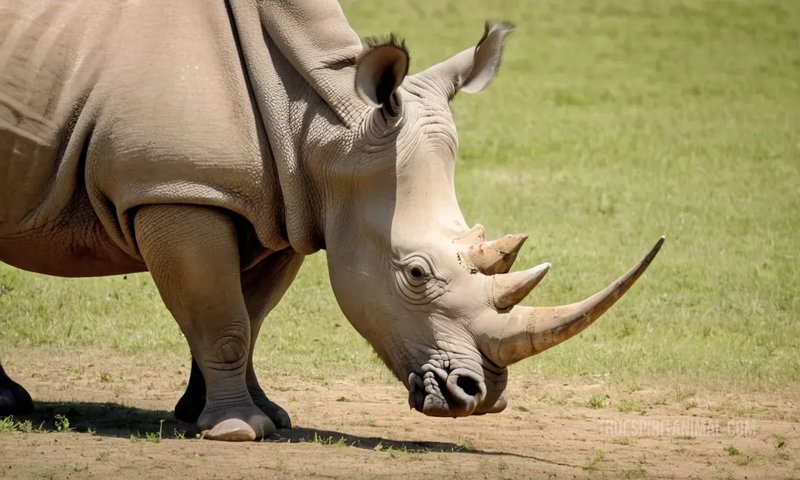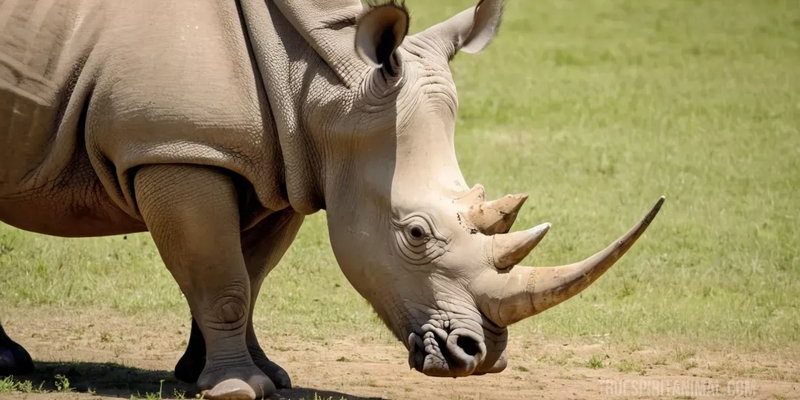
In many cultures, the white rhinoceros is more than just an animal; it embodies various traits and stories that shape how we view wildlife and conservation. You might find these magnificent creatures referenced in ancient legends, contemporary literature, and even modern conservation campaigns. Let’s explore the fascinating and layered representations of the white rhinoceros across cultures, and why they matter in today’s world.
The White Rhinoceros in African Folklore
In many African cultures, the white rhinoceros holds significant value and is often featured in local folklore. One popular story tells of a fierce battle between the white rhino and a lion. The rhino emerges victorious, symbolizing not just physical strength, but also the idea of protection over one’s family and territory. This type of tale resonates deeply in communities where the rhino is seen as a guardian of the land, embodying a fierce love for one’s home.
Additionally, the white rhinoceros is sometimes depicted as a figure of wisdom. In certain traditions, it’s believed that the rhino can communicate with spirits, acting as a bridge between the physical and spiritual worlds. The elders in these communities often use stories about the rhino to impart lessons about respect for nature and the importance of harmony among all living beings.
It’s interesting to note how these tales serve not just as entertainment, but also as a way to teach younger generations about their environment. The stories around the white rhinoceros play a crucial role in fostering a sense of responsibility towards wildlife conservation. When children hear these tales, they develop a connection with the rhino, motivating them to protect it.
Art and Literature Featuring the White Rhinoceros
The white rhinoceros has made its mark in art and literature as well. Artists often use its powerful imagery to express themes of strength and vulnerability. For instance, a striking painting might depict a rhino standing majestically in the savannah, its horns piercing the sky, symbolizing both beauty and fragility. This artistic representation speaks volumes about the challenges these creatures face, such as poaching and habitat loss.
In literature, the white rhinoceros appears in various forms, from children’s books to adult novels. Authors might use the rhino as a metaphor for resilience or stubbornness in the face of adversity. For example, in a story where a young rhino must find its way back home through a dangerous landscape, the journey can reflect a person’s personal struggles. This narrative device allows readers to relate to the character, making the rhino more than just a creature but a symbol of perseverance.
These portrayals often spark conversations about conservation, urging readers to think about the real-life threats facing the white rhinoceros. By weaving these animals into stories and artworks, cultures around the world raise awareness and promote a deeper understanding of their plight.
Symbols of Strength and Conservation
The white rhinoceros is not only a symbol within traditional stories and artworks but also in modern conservation efforts. Organizations dedicated to saving these majestic beasts often use the rhino as a logo or emblem. Why? Because it represents the fight against extinction! The rhino symbolizes resilience, and its struggle for survival inspires activists and conservationists to rally support.
In some ways, it’s like the rhino has become a rallying cry for the conservation movement. When people see images of this powerful animal, it often triggers a protective instinct. They feel compelled to take action, whether that means donating to wildlife organizations or participating in local conservation projects. In this light, the rhino isn’t just an animal; it becomes a beacon for change.
Moreover, these conservation campaigns frequently incorporate cultural elements tied to the white rhinoceros. By connecting local stories and traditions to modern conservation efforts, they create a more meaningful narrative. People are more likely to support causes that resonate with their values and heritage, and the rhino’s representation plays a crucial role in this connection.
Folklore Lessons: Morals and Conservation
In many cultures, stories featuring the white rhinoceros are rich with morals surrounding environmental stewardship. One common theme is the importance of living in balance with nature. For instance, tales may illustrate how the rhino’s disappearance leads to dire consequences, teaching listeners about the interconnectedness of all living things.
These lessons are particularly relevant today, as the world faces unprecedented environmental challenges. By passing down stories of the white rhinoceros, cultures instill a sense of duty to protect endangered species and their habitats. This storytelling approach empowers communities to take an active role in conservation and fosters a legacy of awareness for future generations.
The morals found in these stories often echo the values of respect, compassion, and responsibility. They remind us that each creature, including the white rhinoceros, plays a unique role in the ecosystem. Losing them would not only diminish biodiversity but also disrupt the balance that sustains life on Earth.
Global Influence and Cultural Representations
The influence of the white rhinoceros stretches beyond Africa, reaching global audiences. In zoos and wildlife reserves around the world, this animal captivates visitors and sparks interest in conservation. Exhibits featuring white rhinos often tell their stories, highlighting the cultural significance and the urgent need for protection.
You might see the rhino featured in documentaries or educational programs that discuss biodiversity and conservation efforts globally. These platforms further the narrative surrounding the white rhinoceros, showcasing its grandeur and the importance of its survival. By sharing these stories, they inspire international cooperation in wildlife protection.
Furthermore, the white rhinoceros appears in various media, from films to social media, reinforcing its image as an endangered species that deserves attention. This global outreach underscores the shared responsibility we all have to ensure the survival of such iconic creatures.
The representation of the white rhinoceros in culture and folklore highlights the intricate relationship between humans and nature. From ancient stories and modern literature to artworks and conservation campaigns, the rhino serves as a powerful reminder of our collective responsibility to protect wildlife.
Through these narratives, we learn not only about the magnificence of this creature but also the deep moral lessons that call us to action. The rhino becomes a symbol of strength, resilience, and the urgent need for conservation efforts. As we share these stories and advocate for the protection of the white rhinoceros, we play our part in preserving an incredible heritage for future generations.
In the end, these cultural representations remind us that every creature has a story worth telling, and every story has the power to inspire change. Let’s carry the legacy of the white rhinoceros forward, ensuring that its tale doesn’t end in tragedy but continues to inspire hope and action.

